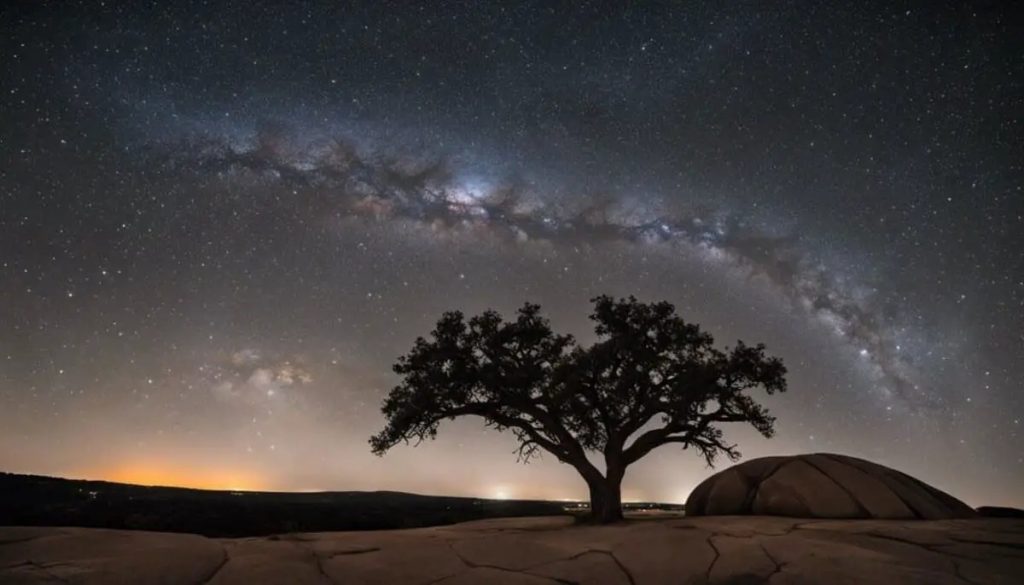The Stars at Night are Big and Bright….

Almost everybody knows the song, and knows where to clap! Our big and beautiful Hill Country itself is deep in the heart of Texas, and it’s one of the best places in the country to stargaze and scan the skies for other celestial wonders. This article will walk you through the best places to search the heavens, whether with a telescope or the naked eye!
One of the most important things you need to consider for nighttime astronomy is how dark the night skies are surrounding you. Unfortunately, as technology progresses, we tend to “over-light” things at night, especially in heavily populated areas. This light pollution has increased since the US switched to brighter LED outdoor lighting over the last decade or so. The journal “Science” reported in 2023 that over the past 12 years, light pollution has gone up over ten percent each year in that period, and the trend looks likely to accelerate. The resulting “sky glow” over towns and cities makes stargazing difficult, if not impossible.
Riding to the rescue is Dark Sky International, a nonprofit agency founded in 1988 in Tucson, Arizona by professional and amateur astronomers. Their stated mission is to “preserve and protect the nighttime environment and our heritage of dark skies through quality outdoor lighting.” They work with corporations and communities to find solutions to light pollution; their five main criteria to maintain dark skies are as follows:
⦁ Use light only if it’s needed
⦁ Direct light so it only falls where it’s needed
⦁ Light should be no brighter than needed
⦁ Use light only when it’s needed
⦁ Use warmer-colored lights, as opposed to stark white
Dark Sky International’s advocacy for astronomy-friendly night skies has caught the attention of both local communities and state park operations, and as of the writing of this article there are almost 75 officially designated Dark Sky Communities and Dark Sky Places across the contiguous lower 48 states. These are places that meet Dark Sky International’s criteria for darker skies that are ideal for stargazing, where more stars, planets, and galaxies are visible to the amateur astronomer. It’s a good start, with new towns and parks being added every year, but more needs to be done.
In the meantime, we’re delighted to let you know that folks in the Hill Country are taking their dark skies very seriously! Several towns and parks in the region have been added to Dark Sky International’s lists, making our neck of the woods one of the most stargazer-friendly areas in the country. Here’s Dark Sky International’s list of Hill Country sites:
Official International Dark Sky Communities
⦁ Dripping Springs, added in 2014
⦁ Horseshoe Bay, added in 2015
⦁ Wimberley Valley, added in 2018
⦁ Fredericksburg, added in 2020
⦁ Blanco, added in 2022
⦁ Bee Cave, added in 2023
⦁ Jonestown, added in 2023
Official International Dark Sky Places (parks)
⦁ Enchanted Rock State Natural Area, Fredericksburg, added 2014
⦁ South Llano River State Park, Junction, added in 2017
⦁ Lyndon B. Johnson National Historical Park, Stonewall/Johnson City, added in 2021
Now you know where to park your telescope when you visit the Hill Country, we invite you to take in our glittering night skies! When you use the Texas Hill Country Travel App to book your vacation home, keep in mind many of our properties are in rural locations with excellently dark night skies. Come check out our galactic neighborhood, and feel free to share your best stargazing photos and experiences!

